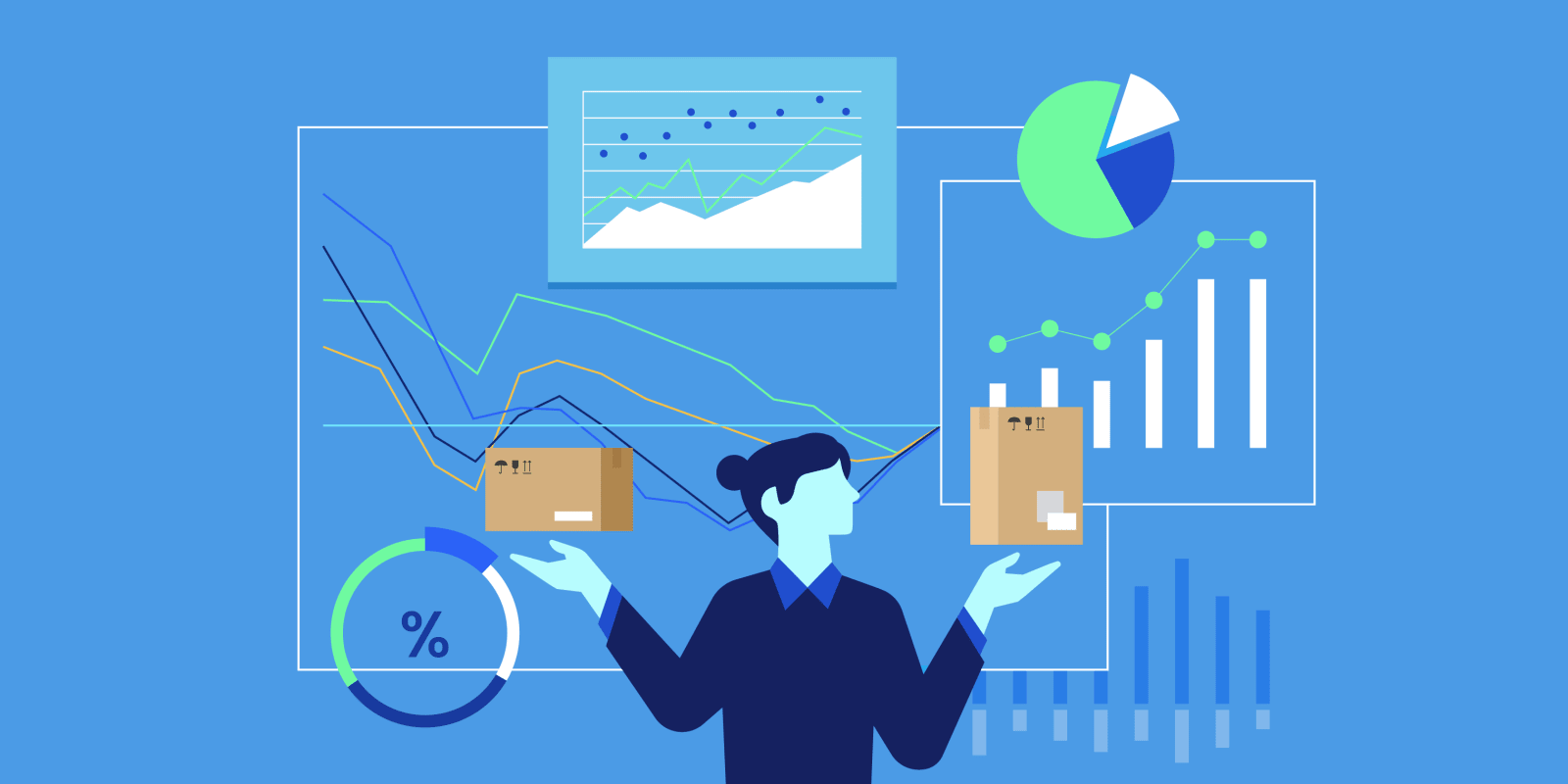Enabling Data-driven Decisions in Procurement: From Insight to Impact
authors are vetted experts in their fields and write on topics in which they are extremely knowledgeable. All of our content is peer reviewed and validated by world-class professionals.

Procurement teams are being asked to do more than ever before, from streamlining operations and mitigating supplier risk to driving environmental, social, and governance (ESG) goals, all while delivering cost savings.
In today’s volatile market, however, those goals are not achievable without precise data to drive decision-making. According to a July 2024 Gartner survey, 72% of procurement leaders are prioritizing the integration of generative AI, demonstrating how essential data analytics in procurement are becoming for strategic sourcing and supplier management.
I’ve seen this firsthand while leading a cross-functional strategic operations team at Mars Wrigley. The team had the right instincts but not the right data. It was my job to help standardize our systems, improve our supplier visibility, and develop a centralized model that gave buyers and executives a single source of information. Following the best practices described in this article, the team worked together to move from disconnected metrics to actionable insights that improved supplier performance and faster, more confident decision-making.
Below, I’ll outline what I learned from building a procurement analytics model from scratch. From choosing the right key performance indicators (KPIs) to creating buy-in across leadership, I’ll show how procurement data analytics can unlock better procurement decision-making, whether you’re managing cocoa bean contracts or optimizing regional supplier portfolios.
Recognize Procurement as a Strategic Lever
To operate strategically, procurement has to be embedded in business planning from the start. That means shifting how the function is perceived. Procurement leaders should regularly communicate how sourcing decisions impact revenue, risk, and resilience, not just cost savings. Showing how a diversified supplier base prevented disruptions or how spend data informed more favorable contract terms helps reposition procurement as a value creator.
Embedding procurement in cross-functional initiatives is equally critical. The earlier procurement is involved, the more influence it has over important outcomes, from innovation to supply continuity. Analytics for procurement play a key role in this shift. With reliable, centralized information, procurement teams can move beyond transactional reporting and provide insight that shapes real business decisions.

Start With Clean, Centralized Data
Strategic procurement begins with data, but often that data is scattered across outdated spreadsheets and tools. Without consistency and accessibility, even the most experienced teams struggle to make informed decisions.
The first step is to align on definitions. What qualifies as spend? How is supplier risk measured? What metrics matter most to your business? If every buyer is using a different formula, there’s no way to compare performance or identify patterns at scale.
At Mars, I led a data consolidation initiative that started by auditing KPIs across teams and regions. We created a shared platform offering real-time visibility into supplier performance and delivery trends. Once the necessary information was in place, we could give leadership a reliable foundation for more responsive risk assessment.
For organizations looking to do the same, start small. Focus on your highest-spend categories or most critical suppliers, and build out from there. When procurement data is clean and connected, it becomes a powerful tool for decision-making, not just reporting. This kind of procurement data analysis enables smarter sourcing decisions and stronger supplier strategies.
Use Visualization to Unlock Insight
Once we had standardized data, we focused on usability. Teams need tools that make data actionable, and even the most comprehensive dataset has limited value if decision-makers can’t easily interpret or explore it.
My team at Mars built an interactive dashboard that mapped every country we sourced from and allowed users to drill into suppliers by examining delivery history and performance trends. This gave both procurement teams and executives a more intuitive way to spot emerging issues without digging through spreadsheets.
Good visualization accelerates complex decision-making. By putting clear, real-time insights in the hands of the right people, we were able to prioritize supplier relationships with far greater speed and confidence. The right procurement analytics tools make this possible, especially when combined with clean inputs and smart governance.
Embed Data Into Governance Structures
Data only drives impact when it’s built into decision-making from the beginning. Instead of treating procurement insights as secondary to existing governance processes, it’s key to embed them directly into those processes.
At Mars, we integrated the procurement analytics software we created into our monthly executive reviews. When KPIs flagged underperformance, like a supplier missing on-time deliveries, it prompted a data-driven response that allowed us to make actionable recommendations for buyers.
This structure created visibility around consistent issues, making them easier to address and improve upon quickly. In this case, procurement helped shape decisions about long-term strategy at the highest level.
Use Data to De-risk Your Supply Base
Data is especially powerful when it informs long-term supplier strategy. One area where I’ve seen this firsthand is in categories with high volatility, like commodity ingredients.
In one case, our team used delivery performance and disruption trends to assess whether a concentrated supplier base was putting us at risk. The data showed that relying on just one or two vendors limited our flexibility. We identified high-performing alternatives and were able to diversify contracts and improve our negotiation leverage.
A strong procurement analysis foundation gives procurement teams the insights they need to make proactive decisions that yield financial value. This type of procurement opportunity analysis can also uncover unrealized savings or innovation potential within supplier networks.

Focus on Skills That Matter in the AI Era
As procurement evolves, the role requires new capabilities. Tomorrow’s procurement leaders will need to be:
- Analytical: Able to identify outliers before they become problems and tie metrics to business outcomes.
- Strategic: Know when to put additional effort into a supplier relationship and when to walk away.
- Digitally fluent: Feel comfortable working alongside AI rather than blindly relying on it.
- Collaborative: Capable of bridging the gap between technical teams and business leaders, translating procurement data analytics into language that drives action.
With Gen AI entering the field, procurement professionals can ask questions of their supplier data in natural language—“Where are we overspending on logistics?” or “Which suppliers have the highest defect rate?”—and receive quick, actionable answers. But the value doesn’t come from the tech alone. It comes from the people who know how to question, challenge, and apply those insights.
Shift From Reactive to Predictive Procurement
Many procurement teams still respond to issues in hindsight. But leading organizations are starting to take a more predictive approach, using purchasing analytics to anticipate challenges and plan proactively. By building predictive capabilities ahead of time, procurement can evolve into a forward-looking business partner that helps companies confidently navigate uncertainty.
To make this shift, procurement teams should:
- Invest in forward-looking analytics. Tools that forecast demand or simulate contract changes can help teams make better decisions before issues arise.
- Track and trend performance data. Longitudinal data helps predict future outcomes based on past behavior, like identifying which suppliers are likely to miss service level agreements (SLAs) during peak season.
- Integrate procurement into strategic planning. Instead of setting annual budgets or reacting to fluctuations, teams should help build long-term category strategies that account for market volatility, geopolitical risk, supplier capacity constraints, regulatory changes, and other factors.
Turn Data Into a Competitive Edge
Procurement leaders need procurement analytics that drive decisions. That starts with clean inputs, but it doesn’t end there. The real value comes when data is embedded into how teams operate and how organizations grow.
In my experience, the most impactful procurement transformations don’t come from new tools alone. They come from treating procurement not as a cost gatekeeper, but as a strategic lever for innovation.
If you want procurement to influence the future of your business, don’t work toward perfecting your data in isolation. Start now to build the structures, systems, and processes that will make your data usable–and likewise cultivate relationships and trust across the organization so stakeholders see the value of using it. Investing in a solid foundation positions your organization to respond, not just react, when the next disruption hits.
